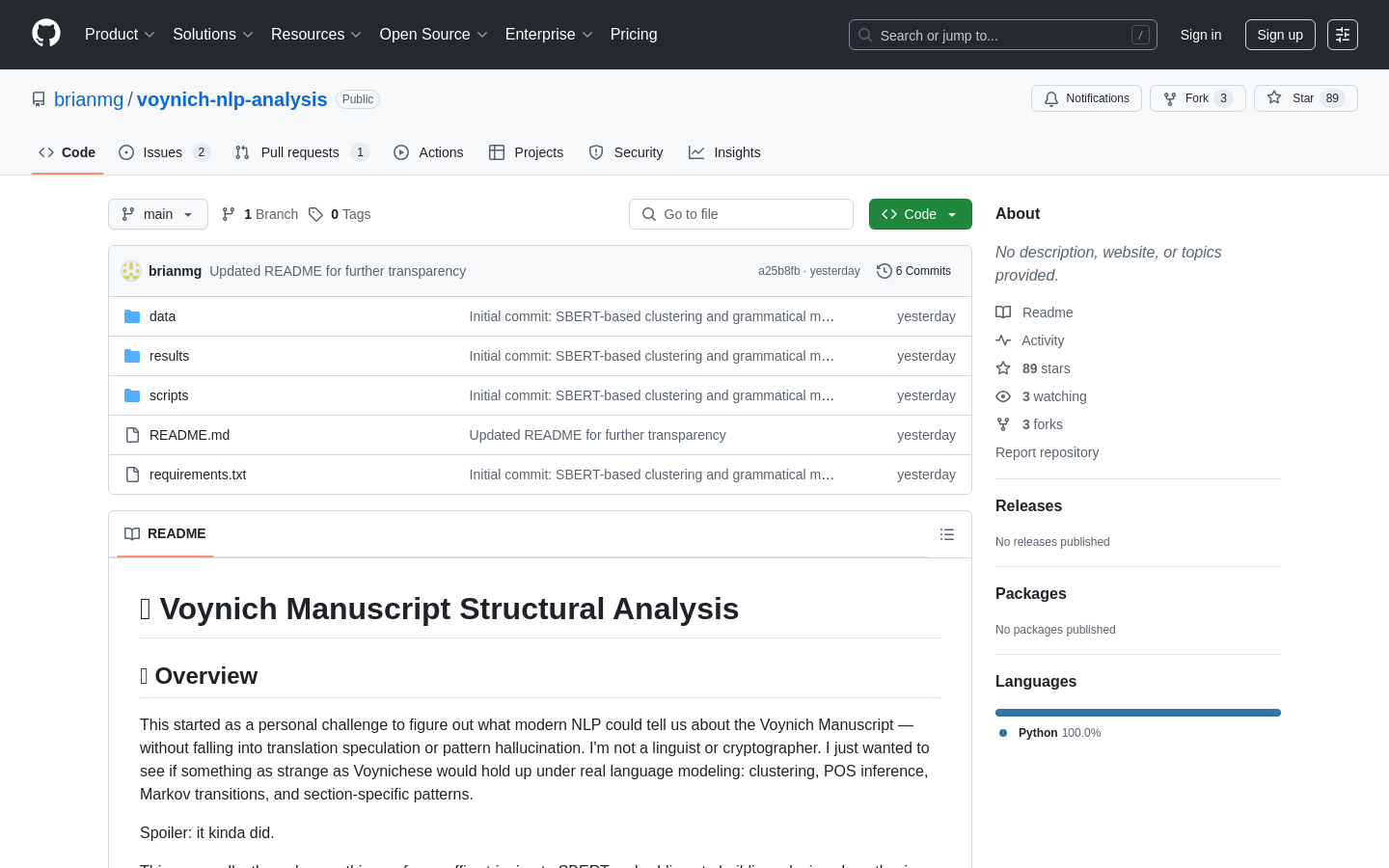

Highlight 1
The project offers an innovative approach to analyzing an unsolved text, applying NLP techniques to reveal hidden structures.
Highlight 2
The use of SBERT embeddings and KMeans clustering allows for sophisticated analysis, making the results more meaningful in understanding the manuscript's language-like features.
Highlight 3
The visual representation of cluster transitions through a Markov matrix provides a clear, interpretable way to understand the relationships between different elements in the manuscript.

Improvement 1
The assumptions made regarding root forms, such as stripping common suffixes, could be problematic and might affect the overall reliability of the analysis. Clearer justification and testing of these assumptions are needed.
Improvement 2
The project could benefit from a more detailed exploration of different linguistic models beyond SBERT to potentially uncover other structural elements.
Improvement 3
A more interactive user interface that allows users to manipulate the data, such as selecting specific sections of the manuscript or altering analysis parameters, would enhance user experience.
Product Functionality
To improve the product's functionality, adding options for users to upload their own datasets or manuscripts for similar analysis could broaden the scope of the tool and attract a larger audience.
UI & UX
Improving the UI with interactive visualizations would allow users to explore the data more easily, such as being able to hover over or click on clusters to see more detailed information about each group or transition.
SEO or Marketing
SEO could be improved by targeting niche audiences interested in both NLP and historical cryptography, offering detailed blog posts or resources about the manuscript's history and the methods used for analysis. Building a stronger online presence through articles, interviews, and academic papers could help promote the project.
MultiLanguage Support
Since the project deals with an ancient manuscript, offering the website in multiple languages, particularly those used by historians and researchers in cryptography (like Latin, Spanish, or German), would enhance its accessibility to a global audience.
- 1
What is the main goal of this project?
The main goal of the project is to apply NLP techniques to the Voynich Manuscript to analyze its structure rather than translate or decode it, revealing patterns and syntactical regularities.
- 2
What techniques were used to analyze the Voynich Manuscript?
The analysis utilized SBERT embeddings, KMeans clustering, and Markov chains to model the manuscript’s structure and visualize the transition patterns between clusters of roots.
- 3
Does this project provide a translation of the Voynich Manuscript?
No, the project does not aim to translate the manuscript. It focuses on exploring the structural and syntactical properties of the text using NLP methods.
